2011 Porsche Panamera V6 - Click above for high-res image gallery
We're the lone vehicle in the far left lane of the Autobahn outside of Köln, Germany. The traffic has lightened, so we mash the accelerator to the floor. While we pull strongly up to about 200 km/h (about 125 mph), the speedometer counts much more slowly as it spins around the right side of the dial. Moments later, the digital indicator on the cluster passes 250 km/hr (155 mph). The late-model BMW 5 Series trailing in our wake has met its electronic speed limiter, so it slowly falls away in our rearview mirror. It takes another ten seconds for the display to stop counting and hover at 261 km/hr (160 mph). Bringing our fun to an end, traffic on the horizon forces us to drop back down to more reasonable speeds just a few seconds later.
Northern Europe is the ideal venue to drive Porsche's latest Panamera models, each fitted with new 300 horsepower 3.6-liter V6 powerplants. We spent time driving both the rear- and all-wheel drive models in crowded cities, the open countryside and unrestricted highways. Where did the new V6 come from and what makes it unique? Where does the powerplant position the Panamera in relation to its competition and what is its new price point? These answers and full driving impressions after the jump...
Photos by Michael Harley / Copyright ©2010 Weblogs, Inc.
The 2010 Porsche Panamera, the automaker's first four-door sedan, debuted in the summer of 2009. The initial offering was three different models fitted with two incredibly capable eight-cylinder engines. The rear-wheel drive Panamera S and all-wheel drive Panamera 4S boasted 400 horsepower 4.8-liter V8s, while the flagship all-wheel drive Panamera Turbo featured a mighty 500 horsepower variant of the identical engine that could launch the four-passenger sedan to 60 mph in well under four seconds. This summer, the three carryover models are joined by two new six-cylinder variants that exchange some of the brawn for brains – a more tolerable bankroll and better fuel economy.
The two new six-cylinder models are simply named the Panamera (rear-wheel drive) and the Panamera 4 (all-wheel drive).
Deception was not the intent, but without any identifying "V6" badging to be found, only enthusiast will be able to distinguish the difference between the new six-cylinder Panamera models and their eight-cylinder siblings without cracking the cowl. Take a closer look, because there are subtle exterior differences. The chrome finish on the window surrounds has been replaced by a matte black treatment and the quad exhaust tips are now twin brushed stainless steel ovals. The standard wheels are unique 18-inch five-spoke alloys and the multi-piston aluminum monobloc brake calipers are painted simple black (not "V8" silver, "Turbo" red or "Ceramic" yellow).
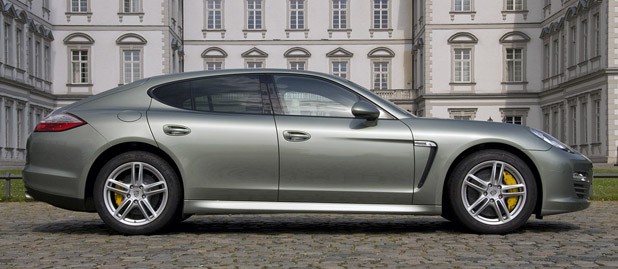
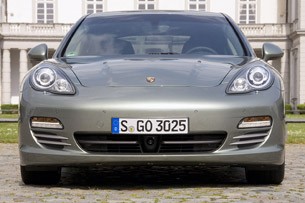
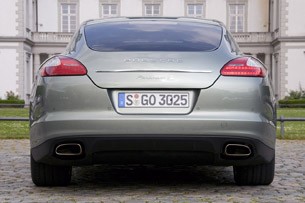
Open the aluminum hood and the all-new six-cylinder engine, nestled deep against the firewall, stares back. While you will likely mistake the exterior of the six-cylinder Panamera for its eight-cylinder or turbocharged siblings at first glance, don't confuse the new 3.6-liter V6 in the Panamera with the revised 3.6-liter V6 in the 2011 Porsche Cayenne – they are completely different. The SUV shares its Volkswagen-sourced 10.6-degree iron-block six with the Touareg (touted as the "VR6 FSI"). However, Porsche has developed an all-new lightweight 90-degree aluminum-block V6 for its flagship sedan. Not only does this dissuade potential naysayers, but it allows the automaker to assemble the V6 alongside the V8 (they share 40 percent of their componentry) and easily adapt the V8's all-wheel drive system to the new V6.
As surmised, the advanced new powerplant is based on the automaker's 4.8-liter V8, minus two cylinders. Chopped down to 3,605 cubic centimeters, the all-aluminum water-cooled six with integrated dry-sump lubrication utilizes direct fuel injection (DFI) and "VarioCam Plus" (adjustable valve lift) to generate 300 horsepower (at 6,200 RPM) and 295 pound-feet of torque (at 3,750 RPM). While the Europeans are offered a six-speed manual (we took a brief spin), the only transmission arriving in North America will be Porsche's seven-speed Doppelkupplungsgetriebe (PDK) double-clutch automatic gearbox with identical gearing to that of the eight-cylinder models, with the exception of a shorter final drive ratio to improve driving dynamics.
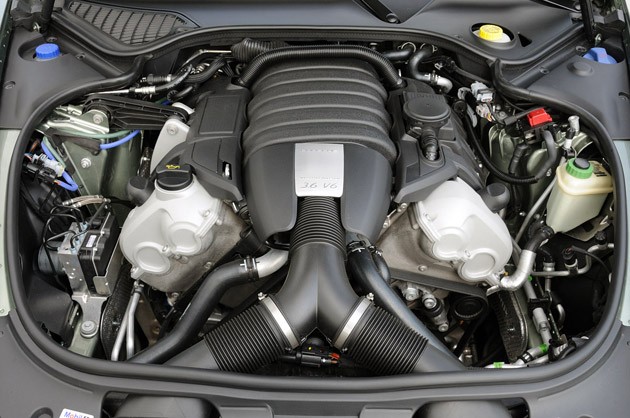
According to Porsche, the 3.6-liter V6 is 66 pounds lighter than the 4.8-liter V8. This helps contribute to the six-cylinder Panamera's respectable curb weight of just 3,880 pounds (undercutting its European luxury competitors by several hundred pounds, or more). According to Porsche's typically conservative acceleration figures, the rear-wheel drive Panamera will sprint to 60 mph in 5.8 seconds (with the "Sport Chrono Package Plus" and launch control) towards a top speed of 160 mph. Thanks to a better launch, the all-wheel drive Panamera 4 managed the run to 60 mph in 5.8 seconds and tops out at 159 mph. Neither six-cylinder Panamera is a slug.
In the interest of fuel economy, all Panamera models are fitted with a standard "auto start-stop" function and a proactive charging system. Under most conditions, the engine shuts down when the Panamera comes to a standstill (don't worry, the audio and climate control systems continue blasting and blowing unfettered). If the stop is extended, the engine will automatically start again to spin the air conditioning compressor or charge the battery if voltage falls significantly. Instead of waiting for accelerator pedal movement, the engine is automatically re-started in a nearly seamless manner when pressure is let off the brake pedal and the start-stop function on the new six-cylinder Panamera has reportedly been calibrated to be less intrusive than its predecessors. The alternator does its part by reducing engine load under acceleration, instead choosing to generate electricity under braking when the energy would otherwise be wasted as heat. If you're note a stop-start fan, the feature is easily disabled with the push of a button.
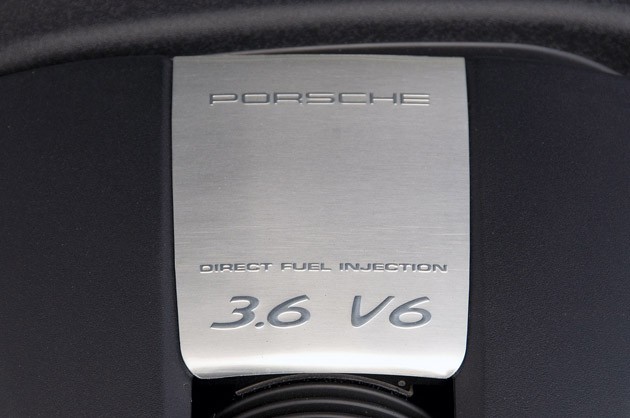
Combine a modern direct-injected six-cylinder engine with a dry-clutch transmission, start-stop technology, intelligent alternator, a lightweight chassis and a low drag coefficient (.30) and it pays off at the pump. In EPA testing, the Panamera earns 18 mpg city and 27 mpg highway (the all-wheel drive is rated 26 mpg on the highway cycle) giving the sedans an easy 500-mile cruising range on their 21.1 gallon fuel tanks (interestingly enough, those fuel economy figures are strong enough to embarrass the Mercedes-Benz S400 Hybrid).
Six cylinders under the hood of the big Porsche sedan may raise eyebrows, but the new price structure should open a few more wallets.
As mentioned in our First Drive last Fall, the eight-cylinder Panamera S starts at $89,800 (plus $975 destination) while access to the Panamera Turbo begins at a stiff $132,600 (plus $975 destination). Those are hardly entry-level prices in its Euro-luxury segment, especially when optioned. However, something interesting happens when you slice a couple cylinders off Porsche's 4.8-liter V8 – the two discarded aluminum pistons ring like $15,400 of silver bullion hitting the concrete floor.
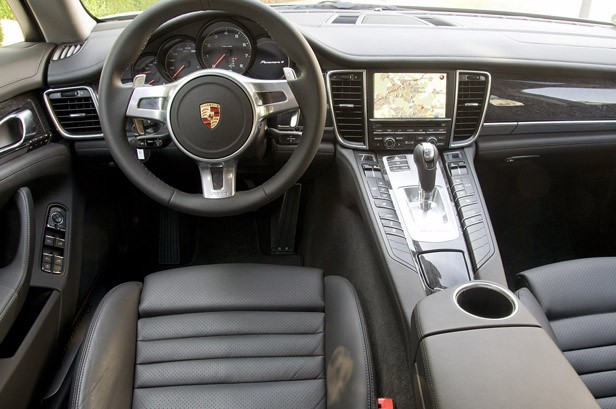
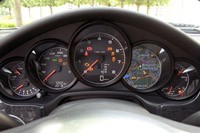
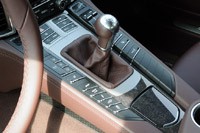
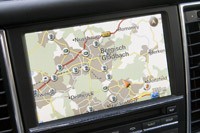
That's right. The base price of the six-cylinder Panamera is $74,400 (plus $975 destination), while the all-wheel drive six-cylinder Panamera 4 is only marginally higher at $78,900 (plus destination). That's not bad when you consider the eight-cylinder Audi A8 starts at $76,000 (plus $825 destination) while the six-cylinder Mercedes-Benz S400 Hybrid starts at $87,950 (plus $875 destination). Only the twin-turbocharged six-cylinder BMW 740i undercuts the Panamera with its base price of $70,150 (plus $875 destination). Fuel efficiency and environmental friendliness aside, the introduction of the six-cylinder Panamera has effectively priced Porsche's first sedan back in the midst of its European competition.
As mentioned, there are only trivial differences between the exterior of the six- and eight-cylinder sedans. The cabins, on the other hand, are virtually identical. All feature soft leather seating surfaces, quality switchgear and intuitive primary analog instrumentation (we're still getting used to the overwhelming sea of buttons on the center console). In fact, when it comes to ambience and features, all Panamera models share the same equipment and options list – neither six-cylinder Panamera is a stripped-down model.
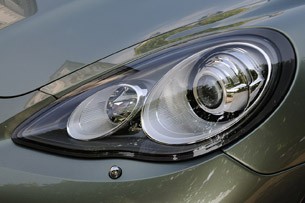
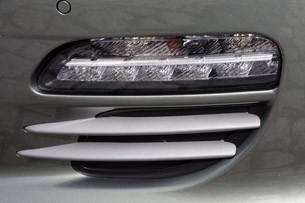
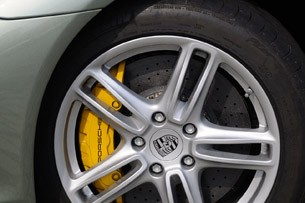
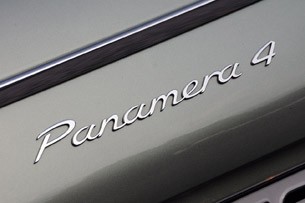
Tooling around Germany in a rear-wheel drive Panamera, we found the 3.6-liter V6 more than adequate for city stop-and-go traffic (we also spent plenty of time in the Panamera 4 – they behave nearly identically on dry pavement). Thanks to the PDK's ability to keep the six in its torque band, we never had to goose the throttle to induce a kick-down in normal driving. Obviously down on horsepower and torque when compared to its burly siblings, the six-pot drives heavy (mostly because it's bit less immediately responsive to throttle inputs), but not annoyingly so. Last year, when we first drove the V8 and Turbo models, we said the weight seemed to fall off with increased speed. It's the opposite feeling with the V6, an engine that is more taxed as velocities exceed triple-digits.
The platform is unaffected by the engine swap (it may actually be a bit better balanced, as the lighter V6 sits very further back in the engine compartment), and the Panamera remains every bit as enjoyable to drive when the straights turn to curves. We never came even remotely close to the grip limits of the tires, despite some aggressive driving.
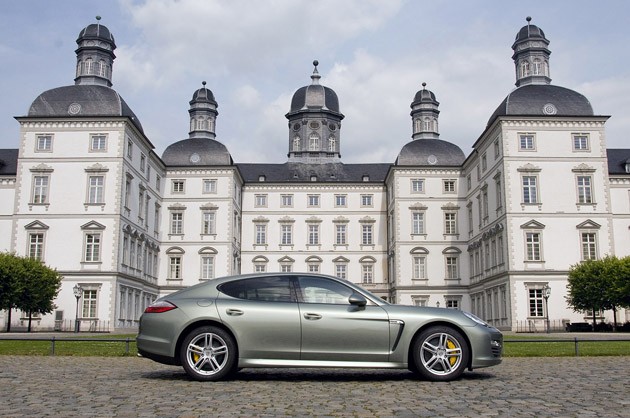
The six-cylinder Panamera is astonishingly comfortable, quiet and frugal on the highway (it would be an excellent candidate for a New York to Los Angeles cross-country dash). On the limitless German Autobahn, the V6 only felt inadequate under hard high-speed acceleration when it was fighting aerodynamic drag. We genuinely missed the muscle of the V8 and Turbo models that allowed us to effortlessly jump from 70 mph to 150 mph as the various speed zones passed beneath us (the Panamera Turbo hits 125 mph in about 14 seconds, while the Panamera V6 takes 26 seconds). The V6 is able of covering real estate at an impressive clip, but it takes time getting to speed, creating a rather interesting phenomenon in light traffic.
Germans are very observant drivers who are well aware of the unwritten social hierarchy on the unlimited sections of Autobahn. Seeing our Porsche badge in their rearview mirrors, BMW and Mercedes-Benz owners would move out of the left lane to let us pass in areas where the speed limits were lifted. They would hold the lane immediately adjacent to us and accelerate hard while waiting for the Porsche Panamera to zoom by. Unbeknownst to those drivers, we didn't have a V8 or Turbo mounted under our hood (and remember there are no visual clues to suggest otherwise). They expected us to open the gap with afterburners lit... so there would be an uncomfortable moment as we crawled by at a mere snail's pace above 125 mph. For obvious reasons, North American drivers will never face this situation.
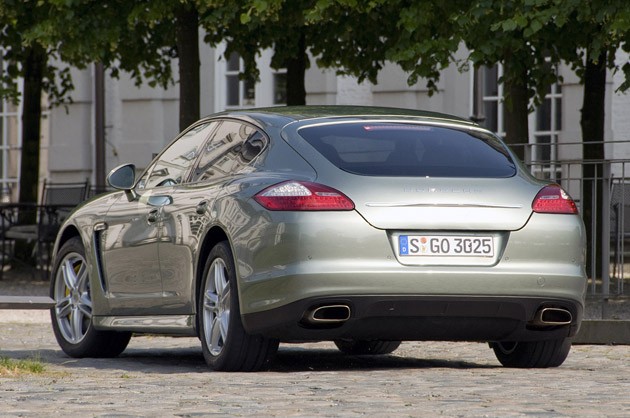
We are torque and horsepower addicts, but Porsche's new 3.6-liter V6 still passes muster. We like its no-compromise build (all aluminum block and heads with magnesium valve covers and aluminum bolts throughout for further weight savings), low-profile 90-degree architecture, smooth power delivery thanks to a balance shaft rotating in the oil sump and impressive fuel economy. The only thing missing is a sexy exhaust note, but rest assured that the aftermarket will soon solve the issue.
The six-cylinder Porsche Panamera is a well-engineered and masterfully-executed machine. Stripping two cylinders from most high-performance cars undeniably cripples driving dynamics and gravely reduces consumer appeal, but these V6-powered sport sedans seem to buck that trend. Rather than becoming two gutless entry-level models relegated to the bottom of the pecking order by their power loss, the smaller engine redirects focus towards the vehicle's luxury and refined driving dynamics. It would be a shame to dismiss these new variants solely on displacement. Instead, consider the 2011 Porsche Panamera and Panamera 4 very competent 300 horsepower sport sedans that just happen to be fitted with a thoroughly modern six-cylinder powerplant.
Photos by Michael Harley / Copyright ©2010 Weblogs, Inc.

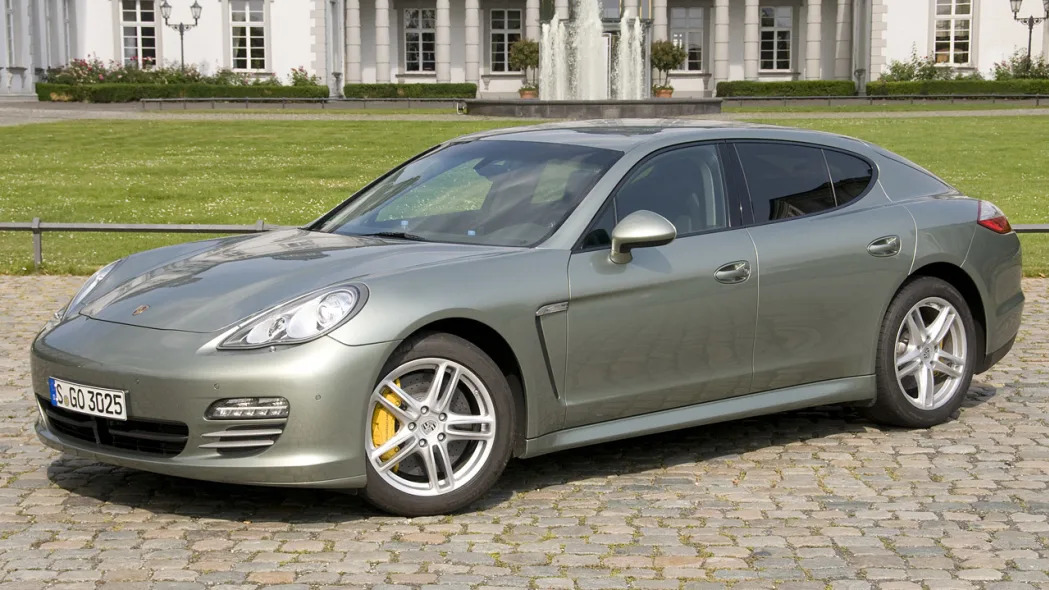

Sign in to post
Please sign in to leave a comment.
Continue